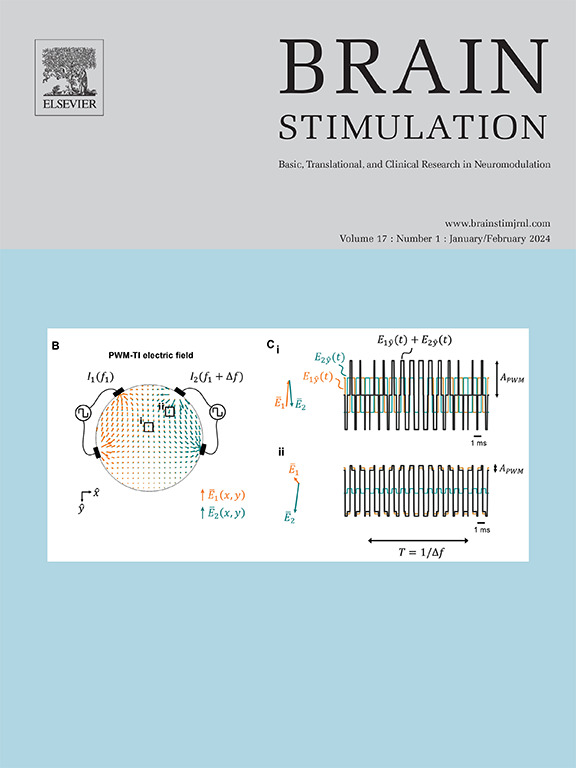虚拟人视网膜:模拟神经信号、退化和对电刺激的反应。
IF 7.6
1区 医学
Q1 CLINICAL NEUROLOGY
引用次数: 0
摘要
目前基于大脑的视觉假体面临着巨大的挑战,阻碍了其应用,如必须进行复杂的手术,以及由于大脑的敏感性而产生更大的副作用。这导致视力恢复的努力集中在大脑中更容易接近的部分——视网膜上。在这里,我们介绍了一个新的,参数化的仿真平台,使研究人类视网膜变性和优化刺激策略。该平台在针对特定患者的定制方面具有巨大的潜力,并有助于为视力受损的个人提供更好的人工视觉解决方案。材料和方法:我们的虚拟视网膜是使用软件包神经元开发的。这个虚拟视网膜平台支持超过10,000个神经元的大规模模拟,同时具有多个重要的视觉通路和详细的网络特性,具有强大的生物学合理性。全面的三维模型包括光感受器、水平细胞、双极细胞、无突细胞、小和伞状视网膜神经节细胞,在人类视网膜的各种偏心(距中央凹1毫米至5毫米)具有全面的网络连接。该模型是利用健康和退化的人视网膜的电生理学、免疫组织学和光学相干断层成像数据构建的。我们通过复制人类和灵长类动物视网膜的大量实验观察来验证我们的模型,特别关注视网膜变性。结果:我们模拟了病变视网膜和最先进的视网膜植入物之间的相互作用,揭示了商业视网膜假体的局限性。我们的研究结果表明,使用视网膜内原型装置的适当刺激设置可以利用网络介导的激活来实现更类似于视网膜对自然光反应的激活马赛克,从而促进更自然的视觉前景。我们的研究还强调了控制视网膜网络中的抑制回路以诱导功能相关的视网膜活动的重要性。结论:本研究证明了该软件包的潜力,并强调了其作为工程师、科学家和临床医生在设计和优化研究和教育应用的视网膜刺激装置方面的有价值的工具的实用性。本文章由计算机程序翻译,如有差异,请以英文原文为准。
Virtual human retina: Simulating neural signalling, degeneration, and responses to electrical stimulation
Introduction
Current brain-based visual prostheses pose significant challenges impeding adoption such as the necessarily complex surgeries and occurrence of more substantial side effects due to the sensitivity of the brain. This has led to much effort toward vision restoration being focused on the more approachable part of the brain - the retina. Here we introduce a novel, parameterised simulation platform that enables study of human retinal degeneration and optimization of stimulation strategies. The platform bears immense potential for patient-specific tailoring and serves to enhance artificial vision solutions for individuals with visual impairments.
Material and method
Our virtual retina is developed using the software package, NEURON. This virtual retina platform supports large-scale simulations of over 10,000 neurons whilst upholding strong biological plausibility with multiple important visual pathways and detailed network properties. The comprehensive three-dimensional model includes photoreceptors, horizontal cells, bipolar cells, amacrine cells, and midget and parasol retinal ganglion cells, with comprehensive network connectivity across various eccentricities (1 mm–5 mm from the fovea) in the human retina. The model is constructed using electrophysiology, immunohistology, and optical coherence tomography imaging data from healthy and degenerate human retinas. We validated our model by replicating numerous experimental observations from human and primate retina, with a particular focus on retinal degeneration.
Result
We simulated interactions between diseased retinas and state-of-the-art retinal implants, shedding light on the limitations of commercial retinal prostheses. Our results suggested that appropriate stimulation settings with intraretinal prototype devices could leverage network-mediated activation to achieve activation mosaics more alike that of the retina's response to natural light, promoting the prospect of more naturalistic vision. Our study additionally highlights the importance of controlling inhibitory circuits in the retinal network to induce functionally relevant retinal activity.
Conclusion
This study demonstrates the potential of this software package and highlights its utility as a valuable tool for engineers, scientists, and clinicians in the design and optimization of retinal stimulation devices for both research and educational applications.
求助全文
通过发布文献求助,成功后即可免费获取论文全文。
去求助
来源期刊

Brain Stimulation
医学-临床神经学
CiteScore
13.10
自引率
9.10%
发文量
256
审稿时长
72 days
期刊介绍:
Brain Stimulation publishes on the entire field of brain stimulation, including noninvasive and invasive techniques and technologies that alter brain function through the use of electrical, magnetic, radiowave, or focally targeted pharmacologic stimulation.
Brain Stimulation aims to be the premier journal for publication of original research in the field of neuromodulation. The journal includes: a) Original articles; b) Short Communications; c) Invited and original reviews; d) Technology and methodological perspectives (reviews of new devices, description of new methods, etc.); and e) Letters to the Editor. Special issues of the journal will be considered based on scientific merit.
 求助内容:
求助内容: 应助结果提醒方式:
应助结果提醒方式:


